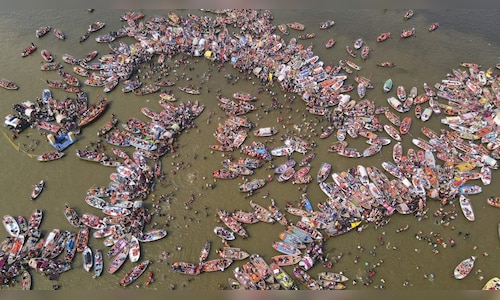This is the first time such a move has been taken for crowd management, the government said in a press note. The technology is expected to prevent accidents in future congregations, reducing risk of tragedies like the one that occurred on January 29, when at least 30 people died in a stampede.
With the help of 2,750 CCTV cameras, including 250 AI-enabled devices, authorities are now able to closely monitor crowd movement across the 4,000-acre site. The AI system feeds data into the Integrated Control and Command Centre, providing real-time insights into crowd density, people flow, parking status, and crowd accumulation at key locations.
Also read | Maha Kumbh pollution concerns: Faith driving people to take holy dip, says spiritual leader
These advanced capabilities allow the authorities to issue alerts when danger thresholds are reached. “We will analyse the data provided by the AI system once the congregation ends, allowing us to adjust these thresholds for more efficient management of future events and prevent a recurrence of tragedies like this year,” the Superintendent of police said.
The command centre, with four operational units — two of which are temporary at the Mela site — played a central role in managing traffic, crowd control, security, and emergency services throughout the event. The command centre employed nearly 400 personnel to monitor live CCTV feed from all 25 sectors of the Mela ground as standard operating procedures (SOPs).
Also read | FM Nirmala Sitharaman, other prominent leaders take holy dip at Sangam
“The frequency of announcements through our public address system has increased, with a stronger and more effective pitch,” the official said. With the Mela concluding on February 26, following the holy dip at the confluence of the rivers, the improved safety measures are expected to contribute to a smoother, safer experience for pilgrims.
(Edited by : Jerome Anthony)


